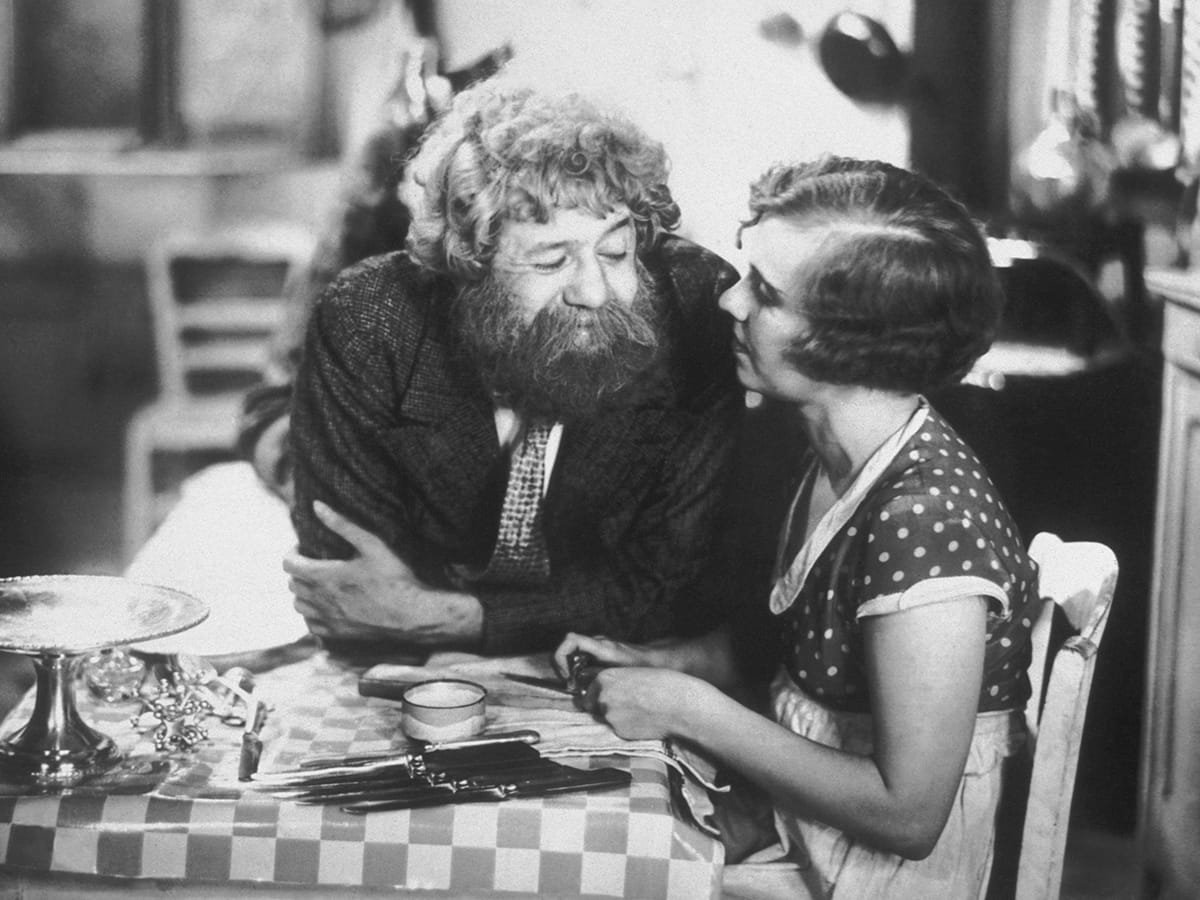Patrick McElroy Examines Renoir's BOUDU SAVED FROM DROWNING (1932, dir. Jean Renoir, France)
One of the fathers of film history, director Jean Renoir once remarked, “The saving grace of the cinema is that with patience and a little love we may arrive at that wonderfully complex creature which is called man.” One of the prime examples of this in his career is his 1932 comedy Boudu Saved from Drowning, where he doesn’t hold judgement on any of his characters, no matter what walk of life or class they come from.
The film was based on a play of the same name by Rene Fauchois, and follows the character of Priape Boudu (Michel Simon), a big bearded, curly-haired tramp in Paris whose dog runs away. Filled with depression, he tries drowning himself in the River Seine. His suicide then fails when he’s rescued by Edouard Lestingois (Charles Granval), a wealthy bookstore owner, who takes him in to live with his prudish wife Emma (Marcelle Hainia), and his maid and mistress Chloe (Sévérine Lerczinska).
Boudu’s ways and manners begin to contrast and disrupt the daily happenings of the household, while he clashes with Edouard, and begins to find himself attracted to both Chloe and Emma. If the plot of this movie sounds familiar, its because it was later remade as Paul Mazursky’s classic 1986 comedy Down and Out in Beverly Hills. There, it was updated to modern-day Beverly Hills, with Nick Nolte taking the role of the homeless person, along with Richard Dreyfuss, and Bette Midler as the wealthy couple who take him in. While the remake was exploring the class separation of Reagan’s America of the 80’s, Renoir is exploring the differences of the pre-Nazi-occupied France.
Boudu is almost a cross between Charlie Chaplin — in that he doesn’t fit in with the world, and joyfully accepts it — and a late-1960’s hippie who doesn’t want to partake in a corrupt establishment. Eric Rohmer once praised Renoir for capturing actors from the front, over the side which we’re used to seeing. When Simon is in the frame, Renoir captures him in full form, from head to toe; you witness his body language portraying Boudu as this giant man who sticks out like a sore thumb in their house.
While this movie doesn’t have as much camera movement as Renoir’s other films, there’s a wonderful shot that begins in a long shot of Boudu, Edouard, and Emma eating at the table down a hallway. The camera then follows Chloe from a distance, as the camera tracks sideways following her into the kitchen.
When discussing Renoir’s films, Boudu doesn’t get mentioned as much as his landmarks such as The Grand Illusion and Rules of the Game. While it might not be on the level of those films, it’s still a unique stepping stone for him as a stylist, and a humanist.
Patrick McElroy is a movie writer and movie lover based in Los Angeles. Check out his other writing at: https://www.facebook.com/patrick.mcelroy.3726 or his IG: @mcelroy.patrick


